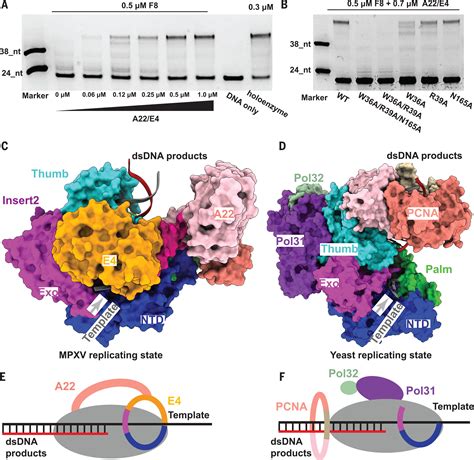In the world of infectious diseases, few are as menacing as the Nipah virus. This insidious pathogen, transmitted from fruit bats to other animals and humans, lurks in the shadows with a deadly potential to cause widespread devastation. With no approved vaccines or specific treatments available, understanding its molecular intricacies becomes paramount in our quest to combat this silent threat.
“Identifying how the polymerase is regulated to switch on and switch off the different enzymatic activities that are required for viral replication would be game-changing.” – Rachel Fearns
Recently, a group of dedicated scientists embarked on a groundbreaking journey into the heart of the Nipah virus. Their findings, published in Cell, have unraveled a crucial piece of this viral puzzle – the structure of its polymerase complex. This intricate machinery plays a pivotal role in orchestrating the virus’s ability to replicate and spread within its hosts.
“This new understanding can help us identify functional properties…that could be leveraged as drug targets.” – Jonathan Abraham
Dr. Rachel Fearns, an esteemed Virologist at Boston University, underscores the significance of this discovery. By delving into how the polymerase functions and how it can be manipulated to impede viral replication, we stand at the cusp of a potential breakthrough in developing targeted antiviral therapies against Nipah.
As we peer through the lens of science into this microscopic realm, Dr. Jonathan Abraham from Harvard Medical School sheds light on the fascinating intricacies uncovered by their research. The identification of specific vulnerabilities within the viral polymerase opens doors to designing novel drugs that could cripple Nipah’s ability to wreak havoc.
“Our study provides critical insights that have…inform…broad-spectrum antivirals.” – Heesu Kim
Heesu Kim, a diligent researcher in Dr. Fearns’ lab, emphasizes how these revelations pave the way for broad-spectrum antivirals that could potentially combat not only Nipah but also related viruses sharing similar characteristics.
The road ahead is fraught with challenges yet ripe with possibilities. By dissecting every nuance of Nipah’s genetic machinery and exploring innovative treatment avenues like small-molecule inhibitors targeting specific regions within its polymerase complex, we inch closer towards turning the tide against this formidable adversary.
“We hope that our findings will spark interest…enabling new insights into a deadly pathogen.” – Side Hu
Side Hu reflects on their collective hope – that their discoveries will ignite curiosity and collaboration among researchers worldwide, ushering in a new era of understanding and combating deadly pathogens like Nipah.
In this intricate dance between human ingenuity and microbial cunning lies our best chance at tilting the scales in favor of life and health. As each revelation brings us closer to unraveling nature’s mysteries, we stand united in our resolve to outsmart even the most elusive foes lurking within our midst.

